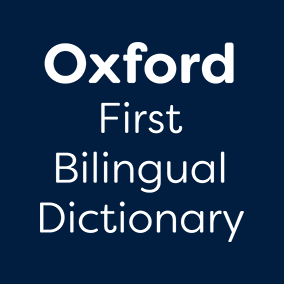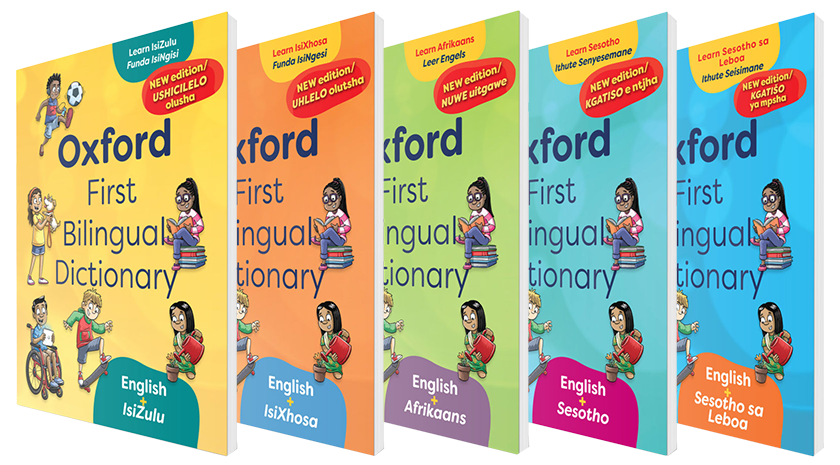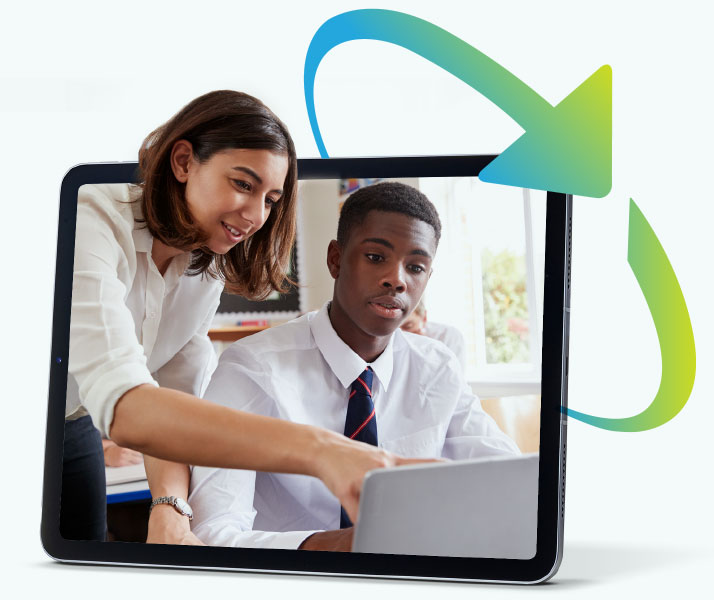
According to the Progress in International Reading Literacy Study (PIRLS) of 2016, almost 80% of South African Grade 4 learners do not understand what they read.
One cause of this is that many teachers are overwhelmed by large classes, and another is that schools lack resources. As a parent, you can help by preparing your pre-school child for reading. One way of helping your child is by developing their spoken vocabulary and emergent literacy skills.
Children learn a language by watching, listening and speaking to their family. The more children are spoken to, the more they learn. The more they are allowed to speak, the more confident they become using language.
Children can understand words said to them long before they can say the words themselves. This is called receptive language; they start to develop listening skills and an oral vocabulary. Children understand many more words than they can say and so it is important that they hear lots of words.
As children learn to say the words they know, they start to build an expressive vocabulary. These are the words they use to express themselves. Children should be allowed to speak and to tell their own stories. They must be encouraged to ask questions and wonder aloud about the world they experience. Here they are practising how to communicate using words.
Read to your children. You can read anything. Books, signs on buildings, and words that they see every day. Help your pre-schooler understand that the words they hear and say can be written. Reading aloud to your child while following the words with your finger or using word cards to practise word recognition will help them master this skill.
The next thing you can do to help them is make them aware that words are made up of sounds. This is developing phonemic awareness in your child. Phonemic awareness can be stimulated through songs, nursery rhymes, reading aloud or telling stories, discussing pictures and playing simple word games, e.g. making up words that start or end with the same sound, or playing “I spy with my little eye something beginning with a …” anywhere and anytime.
The next step is for your child to make the connection between letters and the sounds they make. The key lies in first teaching your pre-schooler to recognise phonemes (the actual sounds that letters make) and not just the names of the letters (symbols or graphemes). This involves breaking words down to their smallest parts, so that the child realises that a word is made up of different sounds.
Instead of using the alphabetical order, experts recommend that you start with the sounds used most frequently in your language, and those your child is most likely to encounter at their language level. You will find lists of the order in which to learn phonemes in books on the subject or on the Internet, though keep in mind that it changes for different languages – be practical about adapting the suggested order to your child’s needs.

There are many specially designed resources available to assist parents in teaching phonics to young children, e.g. the Oxford Reading Tree: Floppy’s Phonics Sound and Letters Programme.
Reinforce letter identification using senses and movement, e.g. let your child play with fridge magnet letters, make the letter out of clay, cut it out of various tactile materials, colour it in, draw a picture or make a movement associated with that letter. Point out letters on products when you’re out shopping, read street names and decode billboard ads to introduce your child to the printed word. Start exposing your child to more text-rich books (short words or sentences alongside pictures) and make sure they are familiar with the basics of holding a book, turning the pages, reading from left to right, top to bottom, and from beginning to end.
Once your child has grasped the connection between sounds and the printed word, start by giving them three-letter words to sound out and blend, e.g. /c/-/a/-/t/ = cat. Follow it up with short high-frequency sight words (words they recognise without having to sound them out) such as and, or, is, are, I, she, he, at, etc. to lay the foundation for reading sentences more fluently.
Children quickly learn to recognise frequently used words. Mastering a basic set of ‘sight words’ accelerates reading speed and facilitates the process of reading. Young children have a short working memory; some studies set that ‘window’ of retention of meaning at around 8 seconds. In other words, if your child spends too long trying to decode the words, they literally may have forgotten what happened earlier in the sentence by the time they reach the end of it. Sight words allow the brain to retain information long enough while reading to make meaning of a sentence.
You can splurge on word cards or make your own by writing the letters out large and clear, preferably black on white. If your child shows signs of getting tired, switch to another activity or playtime to avoid overstimulation or boredom. At pre-school stage, their attention span may not be sustainable for long. Praise and a small reward may be ample encouragement, leaving your child happy to try again later.
If you have access to a smartphone, tablet or laptop/desktop computer, check out apps or electronic games that assist with cementing letter and word recognition. There are many guides showing parents how to teach phonics, e.g. https://home.oxfordowl.co.uk/reading/learn-to-read-phonics/, which also includes hundreds of free e-books designed to help your child practise reading. Some internet resources are free.
Why sight words are important
Good early childhood dictionaries, such as the Oxford First Bilingual Dictionary series*, will offer sight word lists appropriate for first-time readers. You will also find many frequency-based vocabulary lists (first 100 words, first 1000 words, etc.) on the internet, or in other children’s dictionaries. These are lists of words that appear the most frequently when reading.
Agglutinative languages, such as isiZulu and isiXhosa, are fully decodable; unlike English where many words don’t follow the basic phonic rules, for example knife. But these languages can be a bit more challenging for children learning to read, as some words are formed by adding other words either to the beginning or end of a root word. This means that the child may need longer to decipher a word and cannot depend on word recognition skills for reading fluency.
Researchers have been developing various strategies to meet this challenge, including picking out the root in a print word by underlining or bolding it or by printing it in a different colour. You can use the same principle by using a highlighter to identify the roots of words in a storybook, and by making sure that your child recognises the other words. Again, practise makes perfect.

Reading sentences
Once your child can read words, it’s an easy step to reading sentences. Be sure to provide age-appropriate texts (e.g. monosyllabic [one-syllable] words to start off with, gradually increasing the difficulty level as your child’s reading skills develop). At this stage, focus on developing your child’s vocabulary in order to support reading fluency and making meaning.
It’s important to choose books that match your child’s independent reading level. They should be able to read all the words on the page and not struggle with more than 5% of the words. This means they must be able to read 95% of the words. If you throw in more challenging books before they are ready, they are reading at their frustration level and they will find this very demotivating. Also encourage your child to pick out some library books that they like to stimulate their interests. If you are unsure about the level your child is reading at, there are many reading schemes with graded readers to guide first-timers on their reading journey, e.g. Oxford Reading Tree’s Project X and the homegrown Oxford Aweh! series.
Experts urge parents to keep reading aloud to their child even after the child has mastered the process of reading. This develops a sense of reading for pleasure and fluency as you model reading with expression. By reading aloud you also expose your child to more advanced texts. It’s important to stop and ask questions about new or difficult words to make sure your child understands their meaning.
The Oxford First Bilingual Dictionary series is an excellent aid in this process, with its themed pages offering a basic vocabulary and supplemented with extra vocabulary pages, a word list and a glossary; read-aloud stories to show how to use that vocabulary in context; activities to develop phonic awareness and dictionary skills; lovable characters to identify and build a relationship with; and beautiful full-colour picture pages that invite further conversation and story-telling.
Most children will not have advanced to reading sentences or even words by the time they start school, and are not expected to, but whatever pre-reading skills you have managed to instil will help smooth their path to becoming independent, confident and fluent readers – leading to better academic performance. With 40% of Africa’s youth population under the age of 15, it is crucial that our schools turn out literate young adults.
* A new edition of the Oxford First Bilingual Dictionary series for English + Afrikaans, isiXhosa, isiZulu, Northern Sotho, Sesotho and Setswana will be available early in 2021. For more information on this and the other products mentioned above, visit oxford.co.za or contact Oxford’s Customer Services on +27 21 596 2300.




